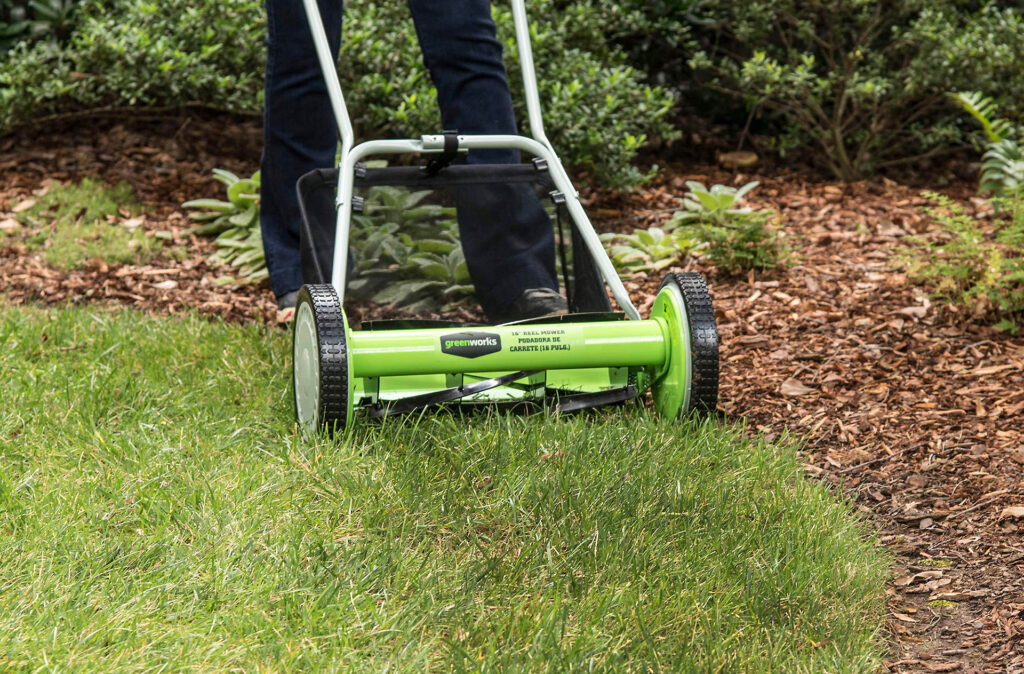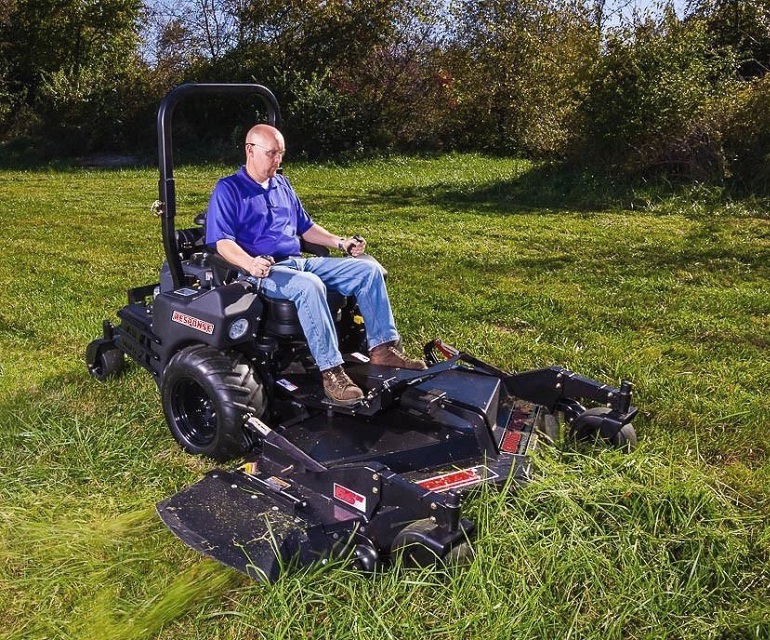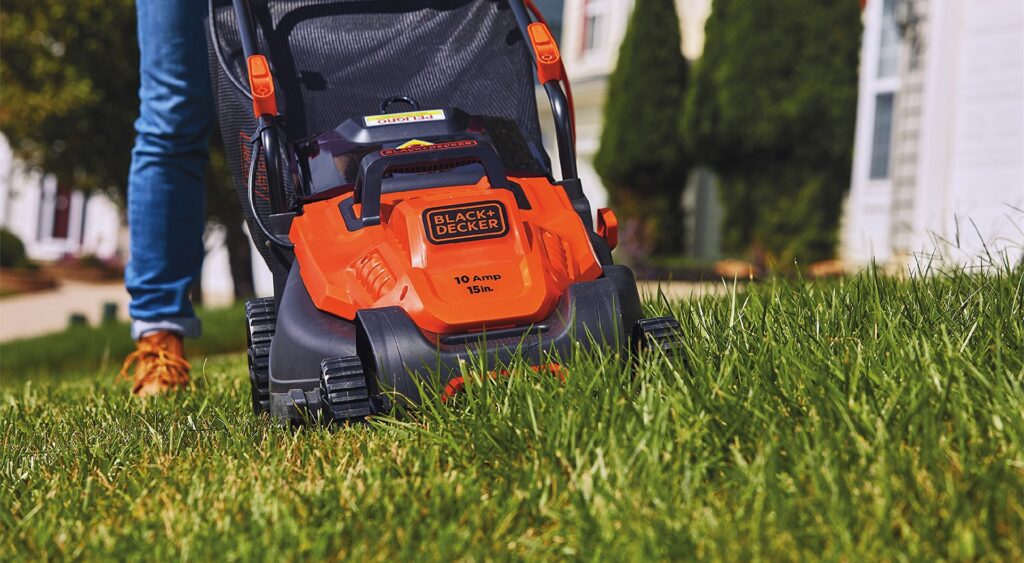
Most homeowners dream of keeping a pristine lawn, and they need a reliable and affordable lawn mower to make this dream a reality. This wouldn’t be possible if your lawn mower stopped working because of some reason; let’s say, a broken throttle cable. You might just be using the lawn mower on a small yard, but that’s no excuse for not knowing how to fix a lawn mower throttle cable.
You can always wait for the technician to fix it for you, but why pay for something you can do yourself? Better still, for the handymen in the house, why let the thrill of fixing something go to a technician instead? Here’s an answer for you; you don’t.
It’s only a broken throttle cable, and this article is here to guide you on how to fix, adjust and replace the throttle cable of your lawn mower as is appropriate. It doesn’t matter the brand of your mower, get your tools ready, and take a crack at fixing your lawn mower for a change.
A throttle cable, also known as an accelerator cable, is a metal cable that links the gas pedal with the throttle plate. This cable’s function is to facilitate the throttle’s opening when the pedal is pressed or a lever is pushed.
Seeing as the throttle controls the vehicle or machine’s power, any damage to the cable could result in the engine or car not being able to change its speed anymore. Such problems should be identified and corrected before the vehicle or machine is put back in use.
However, we are not considering the throttle cable of a car today. The lawn mower’s throttle cable also helps to control the speed of the mower and, consequently, the engine speed. It does this in much the same way as the throttle cable of a car, and its effect also controls the speed of the blades during mowing.
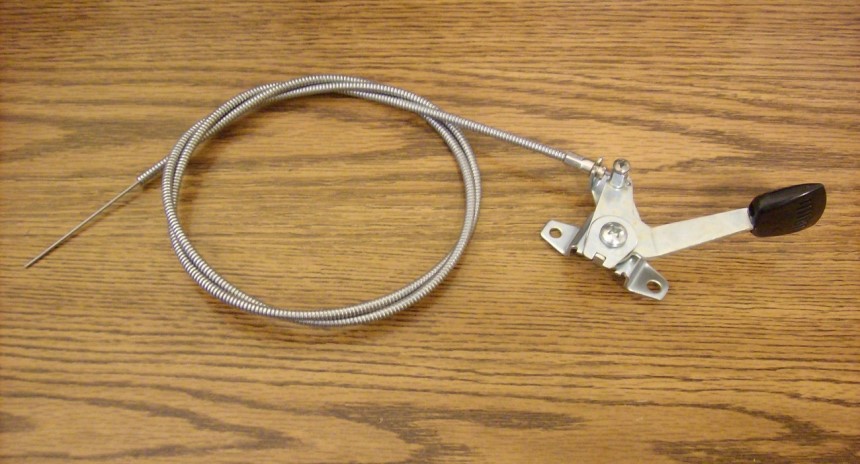 Reasons Why a Throttle Cable Can Break
Reasons Why a Throttle Cable Can BreakThere are a couple of reasons why a throttle cable can break, but the most popular is due to wear and tear. The nature of a throttle cable’s function is such that it comes under constant stress, and any damage to the cable could lead to breakage.
One of such damages is the stretching of the cable. Over time, the cable can become stretched, and this would lead to delayed throttle response. This delayed response could be used as a symptom to determine whether or not your throttle cable is close to breaking and requires repairing or replacing.
Other than this stretching that occurs after prolonged use of the mower, the throttle cable can also suffer from exposure to elements that could lead to rusting or weakening. Another common problem encountered is the dryness of the casing or cover enclosing the throttle cable. This could result in the cable becoming stuck or moving with difficulty.
Regardless of the problem you are having with your lawn mower’s throttle cable or the cause of the problem, if the cable breaks, the lawn mower engine can’t run faster. As such, you would need to fix the cable if you can or change it completely.
Make sure that when changing the throttle cable, you pick out a durable one, such as the Podoy cable.
Also, if you opt for a cordless or corded electric lawn mower, you can avoid this problem in future.
Before you start fixing or replacing the throttle cable of your lawn mower, you might like to change your clothes; you are about to get your hands dirty.
You would also need essential tools such as a wrench, screwdrivers, measuring tapes, and pliers. However, if you plan to adjust the old throttle cable because the engine seems to run on its highest level when on idle status, you would also need a measuring tool, a Z-bending tool, and wire cutters.
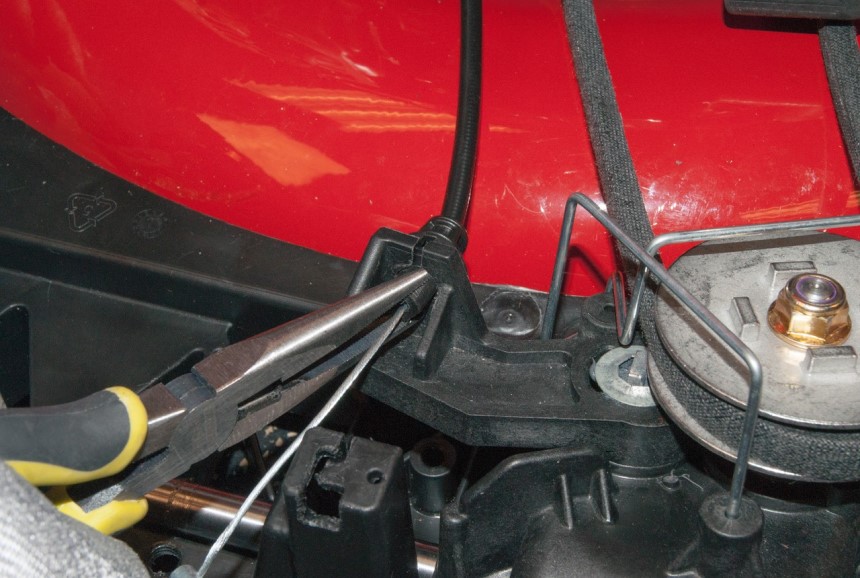
Step 2: After flattening the wire, you hold it upright using the flattener or any appropriate device and twist off the upper wire a few times. Be careful when bending the wire so as not to break it. Next up is reproducing the Z-bend of the original cable on the top of the twisted wire using pliers to create the needed 90-degree angles.
Step 3: Now that you have bent the twisted wire into a Z shape as is needed, you have to snip off one of the aluminum wires at the bottom. After snipping off one end, place the original throttle cable on a table with the newly bent wire below it. This placement should be done so that both wires have their Z tips parallel to each other. It would help you trace where the original cable needs to be cut.
Step 4: Get a wire union device or aluminum crimp and insert the original throttle cable into one of the union device’s holes.
Then put the Z-bend of your twisted wire into the other hole and tighten up the device to ensure that both cables are securely placed. You could also use a flattening device or hammer to achieve the tightening. Once this is done, the broken Z-bend tip of your throttle cable has been successfully repaired.
Step 1: To take off the throttle cable, first remove the cable housings on the lawn mower’s handle. This can be done using a pair of pliers to remove the housing or unscrewing with a screwdriver or your bare hands.
Step 2: Removing the housings would cause them to run down the cable base, and they can be removed entirely, along with the cable, by separating the cable from the throttle arm found on the engine.
Step 3: Depending on the original design of your mower, there might not be holes for a cable, or the holes present might not be big enough for a new cable. If there isn’t, or you require a new hole for a new cable, drill the hole in a comfortable position and use a bolt to fasten the cable. Once this is done, place the new cable on the mower’s handle and weave the wire into the housing. The cable wire should then be made to run down the lawn mower’s handle and through the throttle base and arm.
Step 4: Measure the length of cable needed and add an extra inch as a precaution. The extra inch would allow the wire to be loose in case the handle of the mower needs to be folded down. At the end of the cable, remove the cable cover to access enough wire length to form the Z-bend. This should be done carefully as the wire can be cut along with the covering. Once the wire is exposed, use a Z-bender or pliers to create the Z-bend.
Step 5: The cable should be fastened to the throttle handle by first passing it through the housing before you pass it into the handle.
If the cable is not tight enough for you to have the throttle down, pull it tighter with pliers, twist the lock screw, and replace the housings.
Step 6: Turn on the mower to see how it works. If the mower runs too high in an idle state, you can loosen the cable by twisting the lock screw and letting more cable length through before tightening the screw again. After this, test your adjusted throttle cable to see if it works better.
There are a couple of precautions that should be taken before and during any repair work at all.
Provided you use your lawn mower regularly, it is a foregone conclusion that the throttle cable would break or require adjusting once in a while. If you would prefer this to happen less frequently, purchasing a mower known for its longevity, such as the Craftsman M105, would be a good idea.
Regardless, when the throttle breaks, you have the option of either getting down to business to fix it yourself or you calling an expert to check it out and rack up a bill while spending a few days waiting for the cable to be repaired.
If you are up for the former, this article has all you need to consider a repair, replacement, or adjustment. But while knowing how to fix a lawn mower throttle cable is all good, and well, you have to complete full cleaning and maintenance work, especially before winter, Trusted Source Winterizing the Lawn Mower - The Washington Post Thirty minutes’ work on your power lawn mower this weekend will spare you a horrendous repair bill or worse, the price of a new mower, next spring. www.washingtonpost.com if the mower is to serve for as long as it can.
This maintenance and your newfound expertise don’t mean the mower wouldn’t still require a few checkups, though. They all work hand in hand to ensure your mower’s longevity and, consequently, a well-kept yard.
